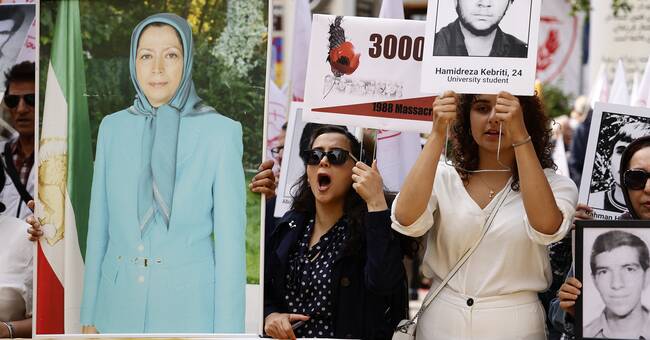The accused sits straight in the back and looks out over the courtroom.
According to the indictment, he held a leading position in one of the Iranian prisons where political prisoners are said to have been executed in the summer of 1988.
When the defense today completed its case presentation, they instead described him as a guard, and later an official, in another prison.
He was in office premises and not where the prisoners were staying, according to defense attorneys.
According to the defense, the man was free during the time the executions were going on, because he had just become a father.
Designated by dozens of witnesses
Dozens of witnesses who have pointed out the man as one of those responsible during the executions of thousands of political prisoners are facing the tasks of the defense. They describe how he chose which prisoners would be taken to what they call the death corridor, a place where it was decided whether they should be hanged or returned to their cells.
But the defense questions the reliability of the witnesses. They point out that a long time has passed and that the plaintiffs have disseminated information about the accused. According to the defense lawyers, this has made it difficult for the police to conduct an independent preliminary investigation.
- It is a problematic case for the district court to handle, says defense attorney Daniel Marcus. We have the time aspect, the issue of credibility, reliability and the dissemination of information that took place in connection with the arrest of our client.
Plaintiff's counsel Göran Hjalmarsson does not agree that the dissemination of information may have affected the witnesses.
- The defense has spent a lot of time showing that certain plaintiffs have posted various information and photographs of the accused on social media.
I mean, nothing destroys this goal because he was a well-known person to them before.
Politically charged goal
When executions of political prisoners in Iran over thirty years ago are now being tried in Stockholm District Court, it is the first time anyone has been brought to justice.
That it is a politically charged case is heard all the way into the courtroom.
Protesters have gathered outside and their slogans reach through the walls.
They are supporters of the People's Mujahideen, an Iranian opposition group that many of the prisoners executed in 1988 sympathized with, according to human rights organizations such as Amnesty and Human Rights Watch.
The executions took place in the final stages of the war between Iran and Iraq.
Meanwhile, the People's Mujahedin attacked Iran from bases in Iraq.
According to the prosecutors, one of those attacks was what started the executions.
Defense lawyers argue that the attack was an internal matter and not part of the international conflict.
If they succeed in convincing the judges if one of the two charges falls, a serious violation of international law.
The trial is expected to last until April 2022.
Javascript is disabled
Javascript must be turned on to play video
Read more about browser support
The browser is not supported
SVT does not support playback in your browser.
We therefore recommend that you switch to another browser.
Read more about browser support
See why the indictment against the 60-year-old is unique in its kind.
Photo: Felix Blom / SVT

